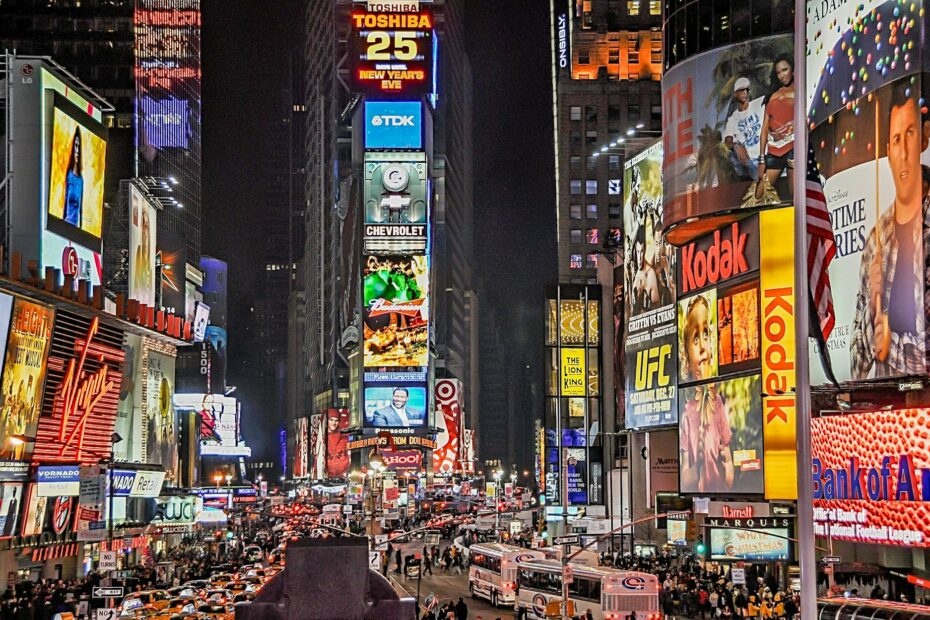For over a century, crowds have flocked to the brightly lit chaos of Times Square to celebrate New Year’s Eve. It has become a cherished tradition: at 11:59 p.m., a dazzling ball begins its descent, and attendees, along with millions watching from home, count down the final seconds of the year. When the clock strikes midnight, the crowd erupts in cheers, often punctuated by celebratory kisses.
But how did this iconic event begin? And why is a descending ball the centerpiece of the celebration?
The first Times Square ball drop occurred in 1907, thanks to Jacob Starr, a Ukrainian immigrant and metalworker, and Adolph Ochs, the New York Times’ former publisher. Ochs initially attracted crowds to Times Square with fireworks to welcome the new year. However, after city officials banned fireworks, Ochs turned to Starr, who worked for Strauss Signs (later Artkraft Strauss, where Starr became president), to design a new spectacle.
Starr created a ball inspired by nautical time balls, 19th-century devices used to help ship navigators synchronize their chronometers. For this purpose, metal balls were dropped at precise times daily in harbors and observatories. The concept for the Times Square ball may have been influenced by the Western Union Building, which also dropped a time ball at noon. While both Ochs and the Times’ chief electrician Walter Palmer are credited with the idea, Starr’s granddaughter, Tama, believes her grandfather originated the design.
The original ball, a simple iron-and-wood frame illuminated by light bulbs, was lowered by hand from one minute to midnight. Tama, who later joined Artkraft Strauss and oversaw the ball drop, described it as a blend of old functionality and new spectacle, brought to life by the era’s cutting-edge electric lighting. At the time, Manhattan was just beginning to embrace electricity, making the glowing ball an awe-inspiring sight in a city still lit largely by gas lamps and candles.
“When the ball reached the parapet displaying the new year’s numbers, the electrician would switch off the ball’s lights and illuminate the numbers, making it seem as if the ball transformed into the new year,” Tama explained. Restaurants and hotels nearby joined the excitement, with waiters donning battery-powered “1908” top hats that lit up at midnight. “It looked like magic to people,” Tama recalled.
Over the years, the Times Square ball has undergone numerous transformations. It began as a 700-pound iron structure with 25-watt bulbs, later replaced by a lighter aluminum frame after World War II. During Mayor Ed Koch’s tenure, the ball briefly became a glowing apple for the “I Love New York” campaign. By 1995, it had evolved into a dazzling spectacle featuring rhinestones, strobe lights, and computer controls. Today’s ball, designed by Waterford Crystal and Philips Lighting, boasts 32,256 programmable LEDs capable of displaying millions of colors and patterns.
Despite these changes, Tama fondly remembers her years as the timekeeper on the roof of One Times Square. For her, the final minute of the year held profound meaning. “When you’re concentrating hard, time seems to slow down,” she said. “That last minute felt like the longest in the world. It was a moment of possibility—a chance to reflect, resolve, and decide to be better. You really can change your life in one minute.”
The Times Square ball drop remains a vibrant symbol of new beginnings, uniting millions in a shared countdown to hope and renewal.

Gladstone is a tech virtuoso, boasting a dynamic 25-year journey through the digital landscape. A maestro of code, he has engineered cutting-edge software, orchestrated high-performing teams, and masterminded robust system architectures. His experience covers large-scale systems, as well as the intricacies of embedded systems and microcontrollers. A proud alumnus of a prestigious British institution, he wields a computer-science-related honours degree.
